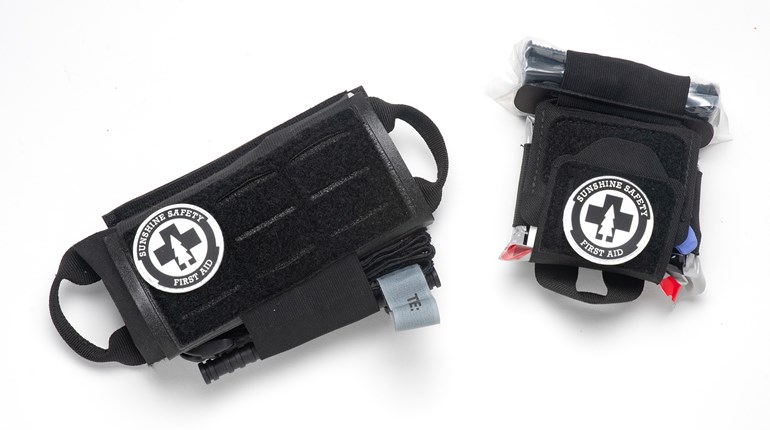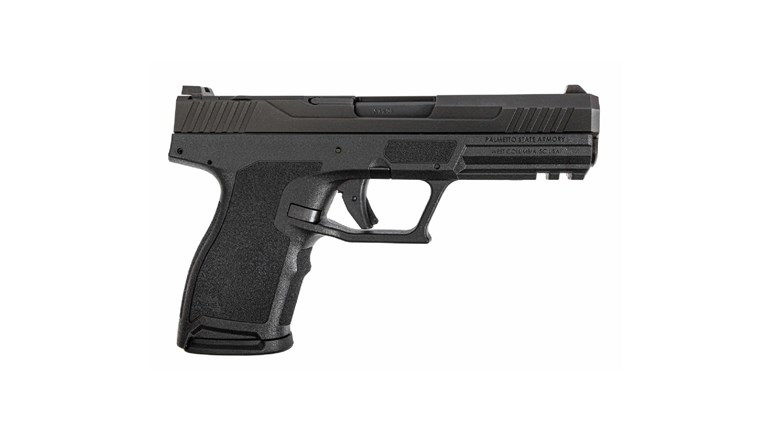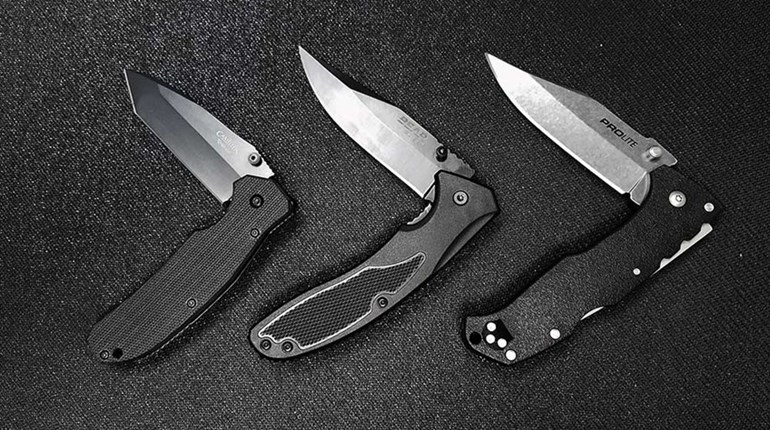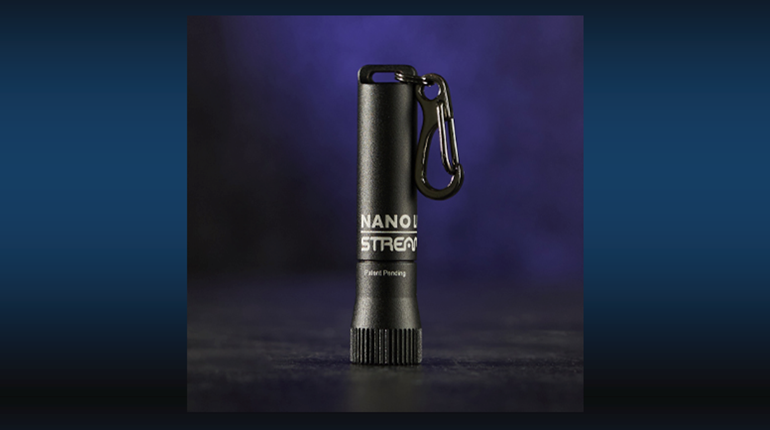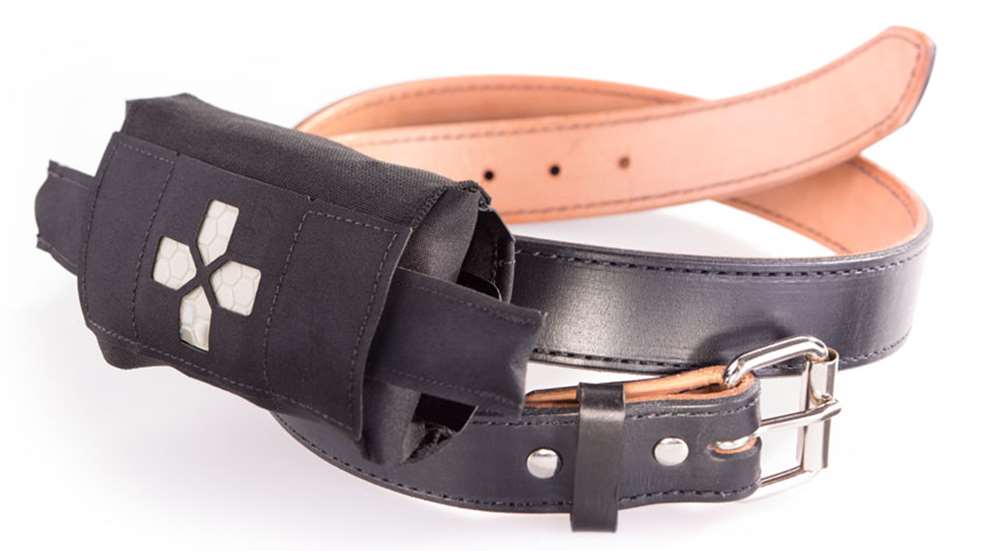
This article, "The Most Important Thing You Carry," appeared originally as a Handbook in the November 2017 issue of Shooting Illustrated. To subscribe to the magazine, visit the NRA membership page here and select Shooting Illustrated as your member magazine.
The subject of Individual First-Aid Kits (IFAK) is something near and dear to my heart, as I lived and used them daily for many years as a Green Beret medic. I used my overseas experience to both hone my own skills as well as develop products that are useful outside of the military. Hopefully I can shed some light on what and why I’ve chosen the items you’ll find in the IFAKs I build and design for friends, my family and myself.
The Why
What makes up your Everyday Carry (EDC) gear is a personal choice. I’m a Glock and Strider Knife guy. Just like we all have what we like for our EDC, carry guns and knives, medical equipment is similar—whether it’s the training needed to deploy it, ease of use or availability. With so many new companies having so many cool new products, it can be a daunting task to figure out what might best suit you and your needs. I carry an EDC IFAK not only for myself, but also for the people around me, so for me versatility is key.
We live in a pretty messed up world right now, no one can deny that. We face so many different threats, from criminal attacks to terrorists armed with everything from bombs to knives to vehicles. It is our responsibility to be ready for our family, loved ones and even strangers. Preparing for the worst is never a bad idea. The bottom line for me is, if you’re carrying a firearm, you need to carry an individual first-aid kit. You train with your firearm, and you should also train with your med kit.
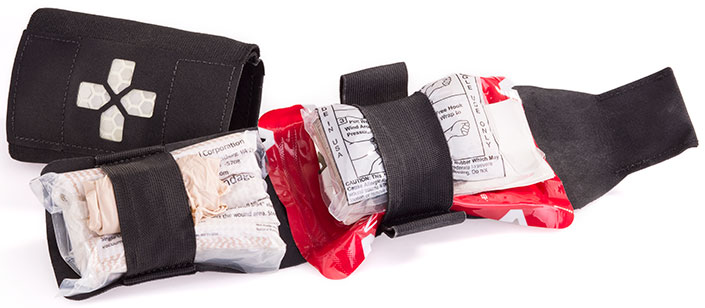
The What
What is in your IFAK is mostly an individual choice—a happy balance between too little and not enough. With too little, you will have to improvise most of your care. With too much, it won’t be convenient and you won’t carry it. That said, every situation is different, so I have five basic kits ready to go. They are each specific to an aspect of my everyday life, ensuring that I will always have something to treat trauma.
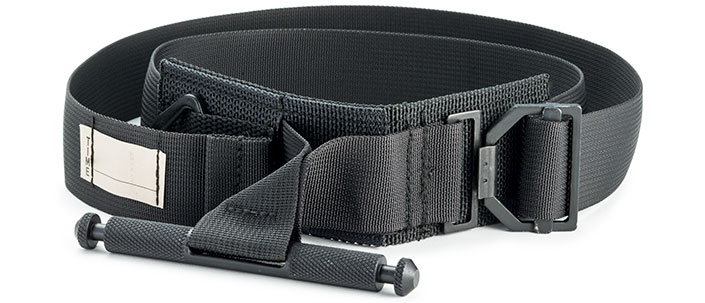
Body Carry
I am a fan of having something on me at all times. I am a civilian now, and I don’t believe in having a big pouch that stands off my body and highlights myself to anyone around me as someone who would carry an IFAK, and therefore possibly a firearm. I keep a tourniquet (TQ) in a handy pocket or around my belt so I can quickly stop any major bleeding without having to dig the TQ out of a bag, or struggle with an injury to access it.
Having your TQ accessible with both hands is the most important thing you can do. Let me say that again just to give it the emphasis it deserves. Carrying a TQ on your body that is easily accessible with either hand is the most important thing you can do. I have seen many instances where a person had to dig for a lifesaving piece of equipment, when that item could have been the difference between life and death. Don’t make that mistake.
I am also a huge fan of keeping some low-visibility items like Nustat hemostatic gauze and a flat-folded dressing like the H&H dressing on my belt or in my pocket. When faced with the greatest adversity of your life you need to be able to rapidly and easily access the items you need to preserve yourself or others.
Bag
I travel often and have young ones, so you won’t often see me without some kind of bag on or near me. I like to carry an innocuous bag, usually from REI or the mall. I do have an old army camouflage-pattern bag that I carry, but more often then not it’s a low-visibility bag that holds lots of stuff (mostly toys for a 5-year-old). I like to keep a couple tourniquets, some bandages and some kind of hemostatic dressing like Nustat.
My go-to med kit comes from Blue Force Gear (BFG). It’s called the Micro Trauma kit. The very cool thing about the BFG kit is there are several levels you can purchase, from the Advanced Kit for law enforcement use to the Basic Kit that’s better for most civilian uses like at the range, in a car, at a school or in an office. The Advanced Kit has the necessary items to save not only the user’s own life, but also those of people around them. It is my go-to for body gear in combat, but in my new civilian life, the Basic Kit lives happily in my backpack in the top pouch for easy access. I also have one in my range bag.
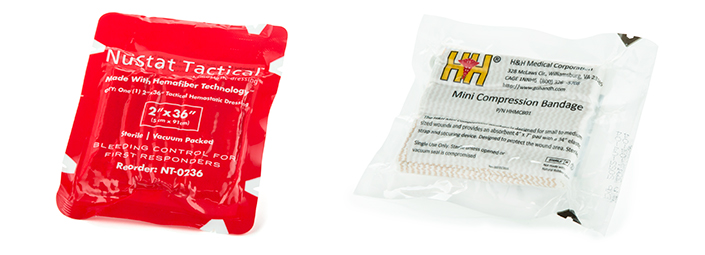
Kid’s Backpack
This is one location may seem odd, since your toddler is unlikely to be able to render first aid to anyone. That said, it’s a great idea for a variety of reasons. I keep a Micro Trauma Kit (Basic) in the top of my little one’s bag. He knows what every item in the pouch is for and has a general idea of how to use it. Making a game of working with the younger group on medicine and trauma is a great way to get them involved and engaged in learning the basics.
In the worst-case scenario, he knows how to get his med kit out and hand it to an adult to help them should they have the need. You’d be surprised at how few schools, day-care centers or other places where you leave your kids in the care of adults have legitimate trauma kits on hand. Oh, they have first-aid kits, but those are for when junior needs a SpongeBob Band-Aid after scraping his or her leg on the playground, not for serious injuries.
Vehicle
In my truck, I have what I call the Trunk Can. I leave a can of medical items in the back of my 4Runner. I chose the plastic ammo cans that are a great barrier from the outside world, keeping the items safe and clean inside. This concept came from a mistake I made and worked hard to correct in Afghanistan. One night, I was urgently awakened by a teammate, saying I was needed at the gate to the base. Not totally awake, I made my way to the gate with a rifle, but no med kit. To my horror, I walked to the gate to find a little girl with a massively injured arm that was bleeding everywhere. Not having brought my aid bag with me, I jumped into medic mode and held direct pressure on her arm while frantically asking for a med kit.
When no kit was adequate, my interpreter drove us both to my clinic where I could have access to anything and everything I would need to stabilize this young, helpless child. Thank God I was able to save her, and this family received much better treatment from the Army than she could have ever hoped for from the local guys. The lesson I learned from this incident was that the minimal supplies at the gate weren’t protected from the environment, and they weren’t safe from pillaging. To solve this problem, I used ammo cans I could secure with a zip tie. This made inspections of the medical gear a snap. Every random reason I would be at the gate was an opportunity to check my gear and make sure it was still there and sealed from the environment.

Training
Training is a hard topic, since there are so many options out there. I will warn you to research your possible trainer fully before committing to a class. Talk to someone who has attended a course in the past from the trainer in question and do your own research as well. Check online and ask for references. Having an instructor giving you incorrect information can mean the difference between saving a life and losing a loved one, friend or co-worker. Find out what equipment you like and buy extras. I love to keep my EDC IFAKs pristine and packaged perfectly. I am also a huge fan of training with people around me in my everyday life (my 5-year-old, my range buddies and my co-workers). Having extras around makes training easy and available often. Training and building good habits are the keys to being successful.
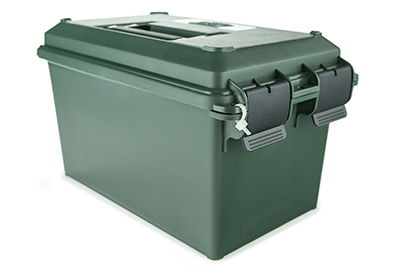
Most of the feedback I have been getting on medical kits and training has a lot to do with price. When you think about the price of these kits compared to the useless items that fill our daily lives, it becomes pennies on the dollar. A great kit will run you less than $200 for an advanced model, down to around $130 for a basic kit, with every price in between. When I think of giving up a couple days of Starbucks, maybe a night out for dinner or that new video game to save someone’s life, it’s an easy choice for me.
So, here’s my EDC gear. I carry a Glock G43 in a Raven Concealment holster. The pistol sports a Taran Tactical mag extension to make it easier to grip with my monster mitts. My carry knife is a Strider folder with a spear point. The knife is permanently scarred from thinking a wall in Afghanistan was a false wall and finding out it wasn’t as I hit a live electrical wire. But the most-important item in my EDC gear is the Blue Force Gear Micro Trauma Advanced kit (MTKA). I feel the advanced kit works well for me because of the years of training I have both given and partaken in to hone my medical skills. The MTKA has everything I would need or want to sustain someone’s life until the EMS service can arrive.
Seek out medical training with the same emphasis you would look for firearms training. Practice with your IFAK items after that training as you would with your gun. And, carry that IFAK with you every day, wherever you go.
About the Author
Former U.S. Army Ranger and Green Beret medic "Doc T" has more than 20 years of experience providing trauma care in the worst environments on earth. He has saved lives from injuries caused by IEDs, small-arms fire, auto accidents and countless other causes. Travis currently owns and operates Second Chance Medical Consulting, which was born out of his passion to educate people about first-aid, trauma care and the importance of safety in all of life’s pursuits.












